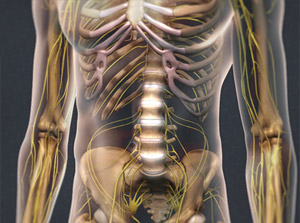Degenerative Disc Disease
The condition known as degenerative disc disease (DDD) is used to describe natural changes that occur over time with the discs located in the spine. The discs that make up your spine are soft in structure, which enables the spine to move in a variety of ways without injury occurring to the spine.
The discs in the spine work to keep the small bones, also known as the vertebrae, hooked together. There are number of small bones that make up the spine, and each one has a disc within it. While this condition is most commonly caused as part of the body’s natural aging process, it can lead to pain within the spine, neck, and other regions due to the effects of the degenerative disc disease and one is the most common causes of low back and neck pain.
This condition is a weakening of one or more vertebral discs, which normally act as a cushion between the vertebrae. This condition can develop as a natural part of the aging process, but it may also result from injury to the back.
Facts about Degenerative Disc Disease
- The first discs that begin to degenerate are those located within the neck and the lower back area.
- When degeneration occurs, it cannot be found on an MRI, which is an imaging tool used in the medical field, other than the standard X-ray machine.
- This condition often shows up around the age of 30 years and can progress rapidly without proper treatment.
- In some cases, disc degeneration can occur for years, and the patient will not experience any symptoms at all.
Types of DDD
- Osteoarthritis: Occurs when the tissue that works to protect the joints starts to break down, allowing them to come in contact with one another.
- Herniated Disc: The disc has a break or bulge that occurs and causes it to leave a small space between the bones.
- Spinal Stenosis: Occurs when the area between the spinal vertebrae is narrowed.
Symptoms
 The symptoms that occur with DDD vary greatly from one person to the next. Two patients can have exactly the same amount of degeneration, but one may experience no pain at all, while the other one experiences severe pain that takes away from their ability to do normal everyday activities.
The symptoms that occur with DDD vary greatly from one person to the next. Two patients can have exactly the same amount of degeneration, but one may experience no pain at all, while the other one experiences severe pain that takes away from their ability to do normal everyday activities.
When pain does occur, the area where disc degeneration is present will determine the type of pain experienced. If the degeneration is present within the top area of the spine, the pain is often felt in the neck, arms, and may extend into the fingers. For pain located in the lower spine, also known as the lumbar region, it will typically occur within the buttocks, thighs, and it may extend into the lower regions of the legs. Most patients who experience pain have stated that the pain often gets worse when they perform strenuous activities, or when they bend over to lift something.
Diagnostic Tests
If you have DDD, your doctor may provide you with a physical exam, which is done to determine where sensitivity is present. Some pressure is applied to the upper and lower areas of the back, and if you respond to pressure with pain, an x-ray will be taken of the area, which will allow your doctor to see if disc generation is present.
Causes
There are two different categories of causes of degeneration disc disease. These include:
- Age related: Over time, the fluid within the spine can reduce, and the discs will not be able to stay in place as securely. As the level of fluid decreases, the amount of space between the spinal joints will decrease, and the disc becomes thin and narrow. Age-related degeneration also occurs when cracks within the outer layer of the discs occur. These cracks allow the soft, jelly-like material that creates the outside area of the disc to move out of its original location, and it can then allow the disc to move out from the two bones surrounding it. This can even cause the disc to break into small pieces due to lack of proper shock absorptions.
- Non-age related: An injury to the disc, such as a hard impact or fall, can cause the disc to begin to degenerate before it would naturally. While degeneration can begin at age 30, it is more common for non-age related degeneration to occur in those who work in positions that require them to lift heavy items on a consistent basis. It is also more common in smokers, as well as in those who have health conditions that cause the space between the discs to become narrow at a faster rate.
Treatment
The most common form of treatment for DDD is the use of management techniques, which help reduce the amount of pain present in the discs, and also helps to slow down the degeneration. Some medications are successful in stopping pain and degeneration, and physical therapy is another common treatment used, which offers you with information on therapies you can do at home, as well. If the condition does not get better within six months to a year, your physician may recommend surgery, which will allow them to replace the disc.
Additional Resources:
webmd.com/back-pain/degenerative-disc-disease-topic-overview
